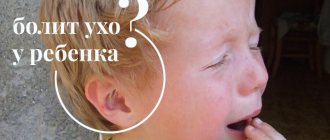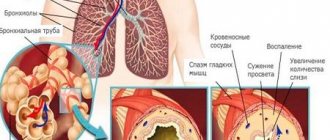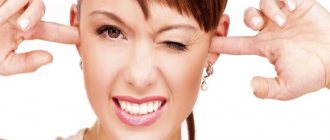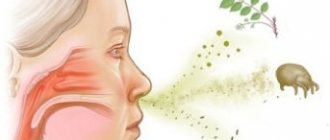Eardrum: structural features and functions
The eardrum is a thin partition between the outer and middle ear. In an adult, it has an oval shape and a diameter of 1 cm.
Despite its small size, this membrane has a complex structure:
- The outer layer facing the ear canal is formed by epithelial cells that are regularly renewed.
- The middle layer consists of fibrous tissue, the structure of which provides the strength and elasticity of the membrane.
- The inner layer is a mucous tissue that provides optimal moisture to the membrane and prevents it from drying out.
If a membrane rupture occurs, all three layers react differently. The mucous tissue and epithelial cover are tightened quite quickly, but the fibrous fibers that form the inner layer do not overgrow. You can see what perforation looks like only with the help of a special device - an otoscope.
The eardrum is one of the most important elements in the complex system of transmission and transformation of sounds in the ear. If for some reason it cannot transmit the received vibrations, then incorrect signals are sent to the brain.
Complications of a ruptured eardrum
Typically, a ruptured or perforated eardrum does not pose a serious threat to the patient's health. Heals on its own within a few weeks.
Hearing loss
This is usually a temporary complication. It goes away as the membrane rupture heals. Naturally, the larger the gap, the longer it takes to heal and the longer the hearing loss lasts. The degree of hearing loss is influenced by the location of the tear or perforation. With severe traumatic brain injury, which is accompanied by damage to the structures of the middle or inner ear, hearing loss can be severe and permanent.
Recurrent middle ear infection
Extensive perforation of the membrane or its rupture may be accompanied by recurrent infection of the middle ear cavity, resulting in the development of chronic inflammation. This may contribute to permanent hearing loss.
What can lead to perforation of the eardrum?
The strength and elasticity of the membrane is provided by the fibrous layer, and a group of small muscles weakens the tension of the membrane when exposed to intense sounds. But this system is not always able to prevent damage to the membrane. The following reasons can cause a hole to appear in the membrane:
- sharp noise (acoustic trauma);
- barotrauma due to a sharp change in atmospheric pressure;
- thermal damage;
- physical injury;
- inflammatory processes in the middle ear.
Perforated otitis often becomes chronic and can have a negative impact on a person’s health, so it is important to promptly identify symptoms and begin treatment. The method of treating a perforated membrane depends on the diagnosis, which can only be made by a specialist.
Sharp unexpected noise
In most cases, the muscles that attach the membrane to the ear canal promptly respond to the impact of loud sound and reflexively loosen the tension so that it does not burst. But this mechanism does not always have time to work, and especially strong sounds lead to rupture of the membrane.
Pressure rupture
The eardrum is involved not only in the transmission of sound, but also in the ventilation of the ear canal. Its position changes when there is a large difference between atmospheric and internal pressure. The cause of perforation can be a sharp change in atmospheric pressure during takeoff and landing of an aircraft, immersion in a body of water and ascent, or driving in mountains or lowlands.
Thermal damage
Thermal injury to the membrane occurs when it is damaged by hot liquids or air. This can happen both in domestic conditions and in production: in metallurgy, pottery and blacksmithing.
Injury
Perforation of the membrane can occur when performing regular hygiene procedures. Even a cotton swab can pierce a thin membrane. Careless attempts to remove a foreign object from the ear canal can also lead to rupture of the eardrum.
See also
Causes, symptoms and treatment of perichondritis of the auricle
Read
Inflammatory processes in the middle ear
The most common middle ear infection is suppurative otitis media. The production and accumulation of purulent masses lead to pressure on the membrane from the inside. As a result, it is greatly stretched, and then it ruptures.
Burst eardrum - signs and symptoms
The eardrum separates the external meatus from the middle part of the ear and is designed to transmit sound waves and various noises further to the auditory ossicles. It is covered with soft tissues that are easily damaged under the influence of various objects or mechanical pressure.
Most of the membrane is tightly stretched and attached to the area of the inner ear and temporal bone. In addition, the tympanic region consists of several parts:
- The outer part consists of the skin, through which it connects to the ear canal.
- Next is the middle part, consisting of fibrous tissues, consisting of two additional elements. They consist of two directions that connect closer to the center of the eardrum.
- The cavity ends with the mucous part, which is considered a continuation of the tympanic cavity.
- These elements support the functioning of the eardrum, and it is thanks to them that sound waves are transmitted. In addition, the functions of the eardrum include protecting the ear from too loud sound waves.
The transmission of sound waves occurs through the outer ear, to which the eardrum is connected via the auditory tube. Sound entering the outer ear is directed through the tube and reaches the membrane.
Next, noises and sounds are converted into nerve impulses and processed in the auditory ossicles. After this, the impulses are sent to the inner ear , and then to the brain. In case of trauma or damage to the integrity of the eardrum, the function of transmitting and processing sounds is disrupted.
The most common causes of perforations
The formation of perforation on the eardrum may occur due to mechanical impact on this area. In addition, strong exposure to physical elements also causes integrity damage. These signs include barotrauma or burns.
Other causes often include chemical burns, as well as inflammatory processes in the ear organ. For example, acute otitis media of the middle ear or purulent inflammation severely damages the functions of the entire ear, including the integrity of the eardrum.
Another reason that causes damage to the membrane is gunshots or strong blast waves. Most often, military personnel and people whose professional activities are related to the shooting coaching program suffer from this type of perforation.
Mechanical injuries most often occur in everyday life, and ear injury with a cotton swab ranks first in everyday life. This happens when the ears are cleared of wax.
For the same reason, putting matches, paper clips and other sharp objects into your ears is strictly prohibited . Mechanical damage also includes children's games. Children, due to their inexperience, often put pencils or pens in their ears.
In some cases, the integrity of the eardrum is compromised due to trauma to the brain or skull. This can happen during a fall or a strong blow.
In addition to the reasons listed above, there are several injuries that provoke the appearance of perforations in the membrane. Due to the pressure exerted by the symptoms listed below, a strong impact on the tympanic cavity develops.
- Often negative pressure is created in the outer ear when kissing the ear. At this time, the person experiences acute pain and strong pressure, which exerts a negative factor on the tympanic region and middle ear.
- In the event of a blow to the outer ear with a person’s hand or palm, pressure is generated, which quickly passes into the middle ear, having a negative impact on the integrity of the membrane.
- In the case of sneezing with constricted sinuses, a person causes pressure in the middle ear cavity and, as a result, a negative effect on the membrane is triggered.
- When diving underwater and quickly descending to a significant depth.
- When the plane takes off.
thermal injury may occur This usually occurs under prolonged exposure to high temperatures, as well as careless handling of hot objects.
All types of burns are dangerous for ear health, however, the most negative factor is a chemical burn. It destroys the integrity of the entire ear, and when toxic substances enter the middle ear, a person loses the ability to hear.
However, the most common factor is the formation of inflammatory processes . Viruses and bacteria, penetrating into the human ear organ, cause dysfunction of many elements, which provokes severe hearing impairment, a feeling of stuffiness, and the formation of wax plugs. In more serious cases, otitis media or inner ear occurs.
With this type of ear disease, dysfunction of the Eustachian tube occurs, as its conductivity is impaired. As a result, a large amount of fluid accumulates in the patient’s ear, which negatively affects the eardrum.
In the presence of purulent or mucous discharge, there is constant pressure on the cavity from the inside. This causes severe pain, as well as dizziness and nausea. When there is a large accumulation of secretions, the membrane ruptures.
Moreover, with a constant negative impact on the eardrum, the integrity of the entire area, and in some cases only of some layers, may be compromised.
In the event of a gunshot wound, the integrity of the eardrum and nearby tissues is compromised.
Symptoms
If the integrity of the eardrum is directly damaged, the patient experiences severe pain.
They can be shooting, pulling, sharp or cutting. After some time, its intensity decreases, but it also causes severe discomfort to the patient.
In addition, the patient experiences the formation of extraneous noise in the ears and head, and hearing is significantly reduced. In addition, various discharges appear, which are mostly purulent or mucous in nature.
If the integrity of the eardrum is damaged due to inflammation caused by viruses or bacteria, dizziness, nausea, sleep disturbances, and loss of appetite occur.
In case of severe ear injury, the patient experiences significant hearing loss. In severe cases of inflammation, the functioning of the auditory ossicles and the functioning of the inner ear are disrupted.
At this time, the patient complains of constant dizziness and disruption of the vestibular apparatus . As a result, the patient often feels nauseous, pain occurs in the temples and head, and in some cases various discharges appear from the sore ear.
In addition, when the integrity of the eardrum is damaged, serious complications often arise, since a large number of viruses and bacteria penetrate into the middle ear area with virtually no difficulty. This can cause the formation of infectious diseases, which include otitis media, labyrinthitis, mastoiditis, and neuritis.
At this time, it is important to begin treatment immediately, as viruses can travel from the middle part to the inner ear. This is dangerous because the labyrinth is close to the brain. Viruses can cause inflammation of the meninges, as well as provoke the appearance of meningitis or acute encephalitis.
Symptoms
The main sign of a ruptured eardrum is sharp, severe pain. Over time, it subsides and other symptoms appear that are not always easy to recognize. Once you determine that the membrane has ruptured, you should immediately consult a doctor.
In adults
Perforation is accompanied by the following symptoms:
- hearing loss;
- bloody discharge from the ear (with otitis media, purulent masses are added to it);
- the appearance of compensating subjective noise;
- the patient feels the release of air from the auditory tubes when blowing his nose and sneezing.
How to determine in children
Children are more susceptible to eardrum rupture. If in adults the pain can go away quickly enough, then in children the symptoms are more pronounced. The problem, in addition to standard symptoms, may be accompanied by the following signs:
- chills;
- general malaise;
- temperature increase;
- vomit;
- lethargy.
The child is not always able to clearly explain what is bothering him, so parents should be especially attentive to unusual changes in his behavior.
Symptoms of damage
The eardrum can burst due to various injuries. This condition is accompanied by severe sharp pain, which subsides after some time. After pain decreases, a person experiences other symptoms described in the table:
| Symptom | Description |
| Serous discharge with blood | Their appearance indicates mechanical injury |
| Hearing loss | Occurs due to the accumulation of a large amount of fluid in the tympanic cavity due to inflammation |
| Noise in ears | Occurs during injury and as a consequence of the inflammatory process. Additionally, ringing, whistling and buzzing in the ear are observed |
| Dizziness | Appears due to damage to the vestibular apparatus due to head injuries or otitis media. The patient feels a disturbance in the orientation of the body in space |
| Nausea | Characteristic of damage to the vestibular or auditory system. Nausea is caused by acute otitis media, noise trauma, or head trauma. Vomiting often occurs |
| Increased body temperature | This symptom indicates an inflammatory process. Additionally, weakness and general malaise are noted |
With a complete rupture, when a person sneezes or blows his nose, he feels air being released from the ear.
A ruptured eardrum manifests itself in children in the same way as in adults, but the child cannot always understand what happened and where it hurts. This significantly delays the diagnostic process. Therefore, if you discover that your baby has become restless and is constantly touching his ear or holding it with his hand, it is necessary to find out the reasons for this behavior.
Diagnostic methods
In most cases, otoscopy and microscopy methods are used to diagnose membrane perforation. The specialist assesses the current condition of the membrane, the size of the rupture and the stage of scarring of the outer layer.
In more complex situations, where perforation has occurred as a result of trauma or during a long-term inflammatory process, the doctor may need to evaluate sound perception. To do this, the otolaryngologist can do audiometry, impedance measurements and tuning fork tests.
Treatment
In most cases, medical intervention is not required for complete recovery, as healing occurs on its own. Slit-like tears heal the fastest. If the hole is small, then after the layers have fused, a small mark remains.
After large or repeated ruptures, scars may form on the membrane, restraining its vibrations and impairing its elasticity. Timely seeking medical help will help avoid such consequences.
If after 2 weeks the membrane does not recover on its own, you have to resort to surgery. For myringoplasty, skin flaps taken from the temporal region or specially grown fibroblasts from the patient are used. Surgeries on the hearing organs are performed using self-absorbable suture material.
Medication
If the perforation is small, it can be covered with a special patch to speed up healing. Before this, the doctor treats the edges of the hole with a drug that stimulates cell growth. Most often, 3-4 such procedures are enough. Cauterizing agents (chromic acid, silver nitrate) are also used to treat small tears. Your doctor may recommend which ear drops you can use after the procedure to help the perforation heal faster.
Physiotherapy
Physiotherapeutic procedures are used to treat otitis media of varying degrees. Your doctor may prescribe the following types of therapy:
- local short-wave UV therapy;
- low-intensity UHF therapy;
- ultrasound therapy;
- infrared laser therapy;
- high-intensity centimeter therapy;
- electrophoresis of antibacterial drugs.
During the healing period for acute otitis media, pneumomassage, blowing of the auditory tube, and the use of biostimulants and proteolytic enzymes are prescribed. How the doctor will treat the disease is largely determined by the degree of pathology and its neglect.
See also
How to remove a foreign body from the ear at home
Read
Folk remedies
There are several proven traditional methods for treating otitis with membrane perforation, the use of which does not contradict modern medicine:
- An alcohol solution of boric acid, which disinfects and warms the ear canals, is combined with Dimexide, an antibiotic with an anti-inflammatory effect. To use these products, they should be mixed in a 1:1 ratio and slightly heated. Cotton pads are soaked in the resulting solution. They are inserted into the ear canals for one hour, repeating the procedure 3 times a day.
- A mixture of alcohol tincture of propolis with olive oil in a ratio of 1:4 is one of the most successful traditional medicines for otitis media. Cotton pads are soaked in the thoroughly mixed emulsion, which are then inserted into the ear canals. This method not only speeds up healing, but also improves hearing acuity.
- Plantain stimulates membrane healing and cleanses the ear canals. For treatment, you can use fresh juice or a decoction of dry leaves of the plant.
Also at home, rose hip decoction, pine needle juice, tincture of nightshade leaves and other medicinal herbs that have an antiseptic and healing effect can be used. But folk remedies in most cases are used as additional therapy during the recovery period, since most often perforation of the membrane requires complex treatment.
If the membrane is damaged, heating (heating pads, compresses, saunas) is contraindicated; it is forbidden to rinse the ear with cold water and try to remove pus, blood clots and foreign objects on your own. If there is perforation, it is not recommended to drip hydrogen peroxide into the ear, as it can increase pain.
Diagnostics
Any visit to the doctor begins with taking an anamnesis. The doctor finds out the nature of the symptoms and the circumstances of their occurrence. How long ago did the pain or discharge from the ear appear, what preceded it, did the temperature rise, and so on.
After all the necessary information has been collected, the otolaryngologist examines the external auricle, notes its condition, whether there are signs of inflammation and traces of pus. Palpates the ear and nearby areas. For example, with otitis media, the pain intensifies when pressing on the tragus.
Next, the doctor proceeds to otoscopy. This is an examination of the external auditory canal and the eardrum itself using a frontal reflector. This is a special mirror that is placed on the ENT doctor’s forehead and, using reflected light, allows one to examine deep-lying anatomical formations. This method allows you to see whether there is perforation and whether it was preceded by barotrauma. Are the walls and eardrum damaged by a sharp foreign object?
Laboratory methods also help in diagnosis. For example, in acute otitis media, leukocytosis is observed in the blood with a shift in the formula to the left, which indicates severe inflammation. In other circumstances of damage to the eardrum, tests do not provide the necessary information. Here it is necessary to resort to instrumental visualization methods. This is a computer or magnetic resonance imaging scan. They allow you to see damage to the skull bones and other signs of a traumatic brain injury.
What is dangerous and what complications may arise
The most dangerous consequence of perforation is complete or partial hearing loss. Such complications are most often associated with damage to the membrane exceeding 25% of its area and accompanied by injury to the auditory ossicles.
The most dangerous is a sluggish and advanced inflammatory process, in which the infection can spread throughout the body and cause progressive deafness. Whether hearing will return in such a situation depends only on timely contact with a specialist.
Also, damage to the membrane, if untreated or the wrong choice of therapy methods, can cause conductive hearing loss, chronic inflammatory processes, adhesive otitis media and disability due to complete hearing loss.
Types of perforation
There are two types of eardrum perforation:
- Regional. The membrane in my ear burst down to the bone tissue.
- Obodkovaya. In this case, the tissues of the tympanic ring are not damaged.
During an examination of the damaged membrane, the doctor determines the extent of the damage, the shape of the perforation of the edges, and the location of the hole.
If the damage is minor, the symptoms of perforation of the eardrum are subtle. Bleeding from the ear does not always indicate serious problems. This is possible when small vessels located near the handle of the hammer are damaged. Serious injury involves parts of the ear such as the muscles of the tympanic cavity and the auditory ossicles. In any case, bleeding means that a traumatic perforation of the eardrum has occurred.
Purulent discharge from the ear canal during perforation of the eardrum indicates the presence of a serious inflammatory process in the middle ear. It is possible that this is precisely why the damage occurred. The pus is taken for analysis.
Methods for preventing membrane rupture
To prevent membrane perforation, it is recommended to follow the following rules:
- consult a doctor promptly if you have symptoms of inflammatory diseases of the middle ear;
- avoid exposure to loud noise;
- maintain ear hygiene;
- do not use sharp objects to clean the ear canals;
- exclude airplane flights and deep dives during periods of exacerbation of diseases of the ENT organs;
- Chew gum or suck candy when taking off and landing an airplane.
Prevention of the development of otitis media and relapse of this disease primarily consists of increasing the body's resistance to the adverse effects of environmental factors. For this purpose, hardening, aeroionotherapy, hydro- and balneotherapy, and irrigation of the oral cavity with mineral waters are prescribed. At home, you should maintain optimal temperature and humidity conditions and drink enough fluids.
When visiting the pool, it is recommended to protect your ears from water penetration, since contact with chlorine is one of the most common causes of chronic otitis media in adults and children.
Treatment of a ruptured eardrum
In most cases, membrane perforation heals on its own without complications within a few weeks. If the membrane does not heal, treatment is necessary.
Eardrum patch
If there is a small tear or perforation, the doctor may close it with a paper patch. Before this, the edges of the tear are treated with a drug to stimulate growth, after which a paper patch is applied to the tear site. Three or four such procedures may be required to completely close the gap.
Surgery
In case of a larger rupture or perforation of the membrane and if the above method is ineffective, surgical intervention may be required. An operation to restore the integrity of the eardrum is called tympanoplasty or myringoplasty. The operation is performed under general anesthesia. The surgeon makes a small skin incision above the ear. A thin piece of skin is taken from it. It is used to stitch the hole in the eardrum.
The surgeon inserts a special microscope into the ear canal and then the entire operation is carried out with its help through the ear canal. The eardrum is lifted and the flap is placed over the hole in the eardrum. Special absorbable materials are placed on both sides of the membrane to help hold the flap in the desired position until it heals completely. After a few weeks, this material is completely absorbed. A swab moistened with an antibiotic is placed in the ear canal for three to four weeks until the flap is completely engrafted to the eardrum.
During the first time after surgery, you may experience some pain and discomfort. It is recommended not to blow your nose or make sudden sucking movements through your nose. This is due to the fact that on the back wall of the nasopharynx there are openings of the auditory (Eustachian) tubes, which connect the nasopharynx cavity with the tympanic cavity. The role of these pipes is to equalize the pressure in it. With sudden movements of air in the nasopharynx, the pressure in the tympanic cavity can increase, which leads to movement of the eardrum, and this, in turn, can lead to displacement of the flap and disruption of its healing.
Like










